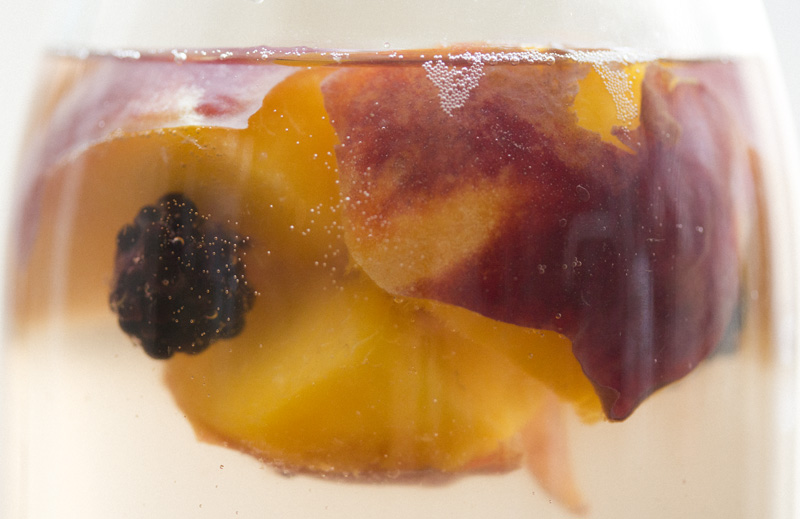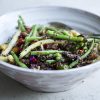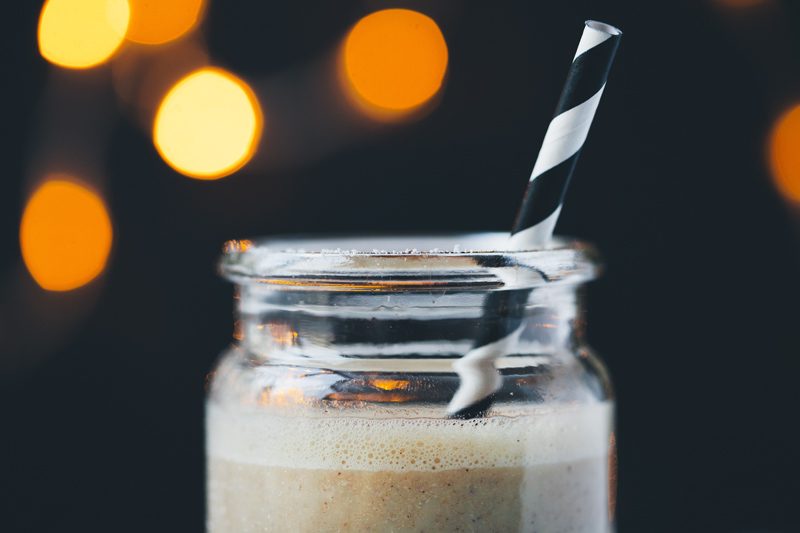You are looking at a close-up photo of a 1-day old kvass. I’m guessing that 99% of you are thinking: “Errh, KVASS … what!? Is that another new and complicated health trend?!?” Well, it is not complicated, not new and not a trend – yet anyway. But it is very healthy. If you have tried or heard of the fermented tea, kombucha, this is kind of similar, although a hundred times easier to make.
Kvass is a russian fermented beverage traditionally made with beets, whey and rye bread. This simplified fruit version is whey- and grain free, and still packed with nutritious probiotic enzymes and amazing natural bubbles. Personally I think fruit Kvass tastes somewhat like a healthy version of apple cider, but maybe I’m the only one making that connection? It has a fruity flavor with a slight hint of vinegar, honey and fizzy bubbles that teases your tongue. It is a good alternative to a soft drink, an evening cocktail or a healthy morning shot. You can vary the flavors and fruit as you like, but to help you out we have compiled a list of suggestions after the recipe.
It is a very easy recipe with few ingredients and short preparation time (yes, 48 hours is actually short, for being a fermented beverage). So this is perfect if you want to try fermenting for the first time. As with kombucha, this is something that not everyone will love immediately. I did, but David had to try it a few times to get used to it. Now we both enjoy it (although me still more than him)
I have learned this fermented beverage technique from the inspiring author and whole food pioneer Rebecca Wood. She has written a handful of books about healthy food and grains. I have just ordered: ‘The New Whole Foods Encyclopedia’. Can’t wait until it arrives!
If you like this recipe you probably also love kombucha, which we have a recipe for in our upcoming cookbook.
Fermented Fruit Kvass (Fermenting technique from Rebecca Wood)
1 large glass jar
Make sure to always use organic ripe fruit when fermenting.
1/4 of a large glass jar of mixed organic ripe fruit (we used fresh peaches and blackberries)
1 tbsp unpasteurized honey
1-inch fresh ginger, peeled
pure water to almost fill the jar (you get best result with filtered or mineral water)
Place fruit, honey and ginger in the jar. Add water to fill up the jar, except the top inch. You’ll need that extra space to allow pressure to build. Tightly close the jar. Place in room temperature for 2-3 days, give it a shake twice a day to prevent bacteria from forming on the surface. After 24 hours you can see fermentation bubbles. Taste your brew every day to see when it is ready, it depends on the room temperature and sugar content. It should taste sweet and tangy and the fruit look ‘cooked’. Strain the brew and drink as it is or store in the fridge for up to a week.
If you have any problems with the fermenting process, you could add whey or yeast as a starter, it could depend on the water or the honey you use. I use (scandinavian) tap water or filtered tap water.
The natural alcohol level in homemade Kvass is very very low, about 0.05%-1.0%, which means that children can drink it too.
Other Kvass Combinations
cherry, raspberry, cardamom
apple, raisins, cinnamon
lemon, dried apricots, ginger
mango, chai spices
beet, apple, lemon balm
nectarine, camomile
blackberry, peaces, vanilla bean
dried prunes, lemon, ginger
Keep refrigerated for up to 1 week.
Ps. We were so amazed by your fantastic love and wedding stories on our previous post. Thank you so much for sharing! If you haven’t read them. Check out last weeks post and scroll down to the comment section.










80 Comments